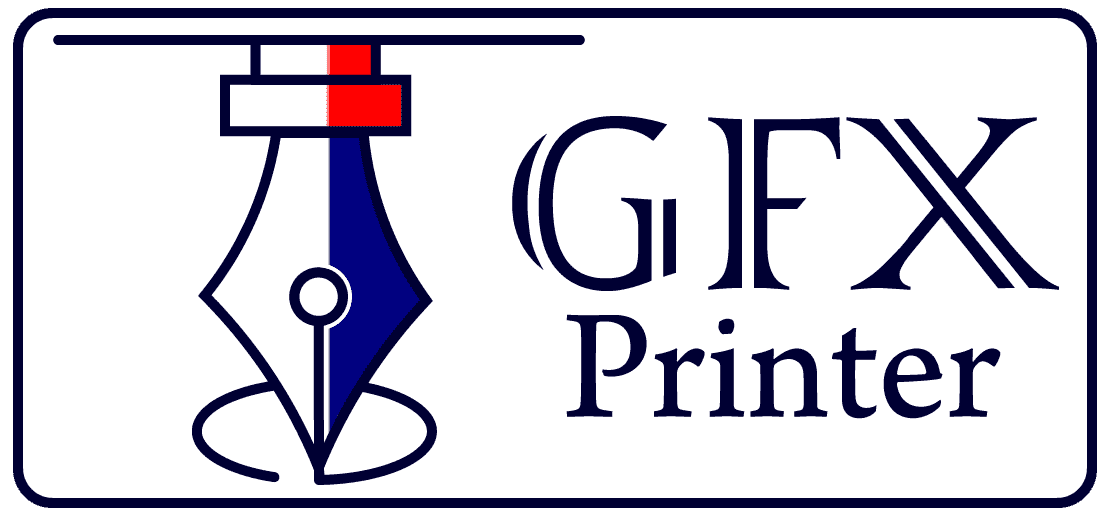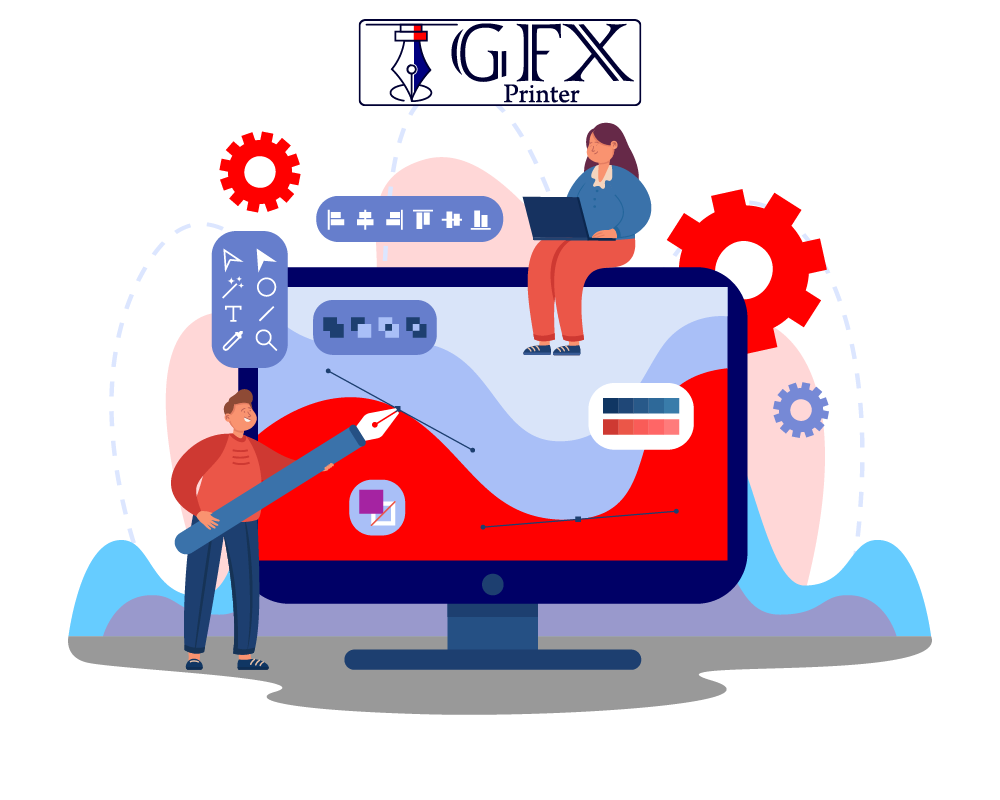The Fundamentals of Print Design
-
Understanding the Elements and Principles of print Designs
Design is essential for print design creation. To create eye-catching designs, you must understand the elements and principles of design. The elements include color, line, shape, texture, and space, while the principles guide their effective use, like balance, contrast, unity, rhythm, and proportion. Combining these elements and principles creates visually appealing designs. For instance, if you’re creating a print design like a brochure, logo, or website, knowing how to use design effectively is the key to making it look professional and attractive. Therefore, mastering the elements and principles of design is essential for successful print design creation.
-
Exploring the Different Types of Print Designs
Print design is a vital aspect of creating eye-catching materials. There are many several types of print designs, including brochures, flyers, and business cards. Each type requires different design elements and principles, such as color, line, and shape, to create a professional look. You have to understand how to use these elements effectively is key to making your print designs stand out. With the right combination of design principles and creative ideas, you can create unique and compelling designs for any print project, whether it’s a logo, brochure, or website.
-
Analyzing Successful Print Designs Examples
When it comes to creating successful print designs, understanding the elements and principles of design is crucial. By mastering these concepts, designers can produce work that engages and communicates effectively with their audience. But how can we apply these principles to real-world examples? Let’s inspect some successful print designs and explore how they use these design elements to create powerful and effective visual communication. By analyzing these examples, we can gain insights into how to create compelling designs that captivate and inspire.
Creating Effective Print Designs
-
Conducting Research and Gathering Inspiration
When creating print designs, it’s essential to gather inspiration and conduct research. Start by looking at successful designs in your niche, noting what stands out and what doesn’t. Explore different styles, colors, and fonts to find what resonates with you. Don’t forget to look beyond your industry for fresh ideas. Keep a sketchbook handy and jot down your thoughts and ideas. Finally, don’t be afraid to experiment and push the boundaries to create designs that truly stand out. You can find some inspiration at Behance or Pinterest.
-
Defining Your Design Brief and Target Audience
While producing print designs, it’s crucial to identify your design brief and target audience. A design brief summarizes the project’s aims, scope, and needs. It helps you stay focused and guarantees that you and your customer are on the same page. Understanding your target demographic is vital in producing designs that will resonate with them. Understanding their age, hobbies, and habits can lead to your creative options. By keeping your design brief and target audience in mind, you can produce designs that successfully express your message and achieve your desired goals.
-
Brainstorming and Sketching Your Ideas
Brainstorming and drawing are crucial activities to generate print ideas. To start, seek inspiration from many sources such as nature or art. Next, scribble down ideas and utilize mind maps to arrange your thoughts. Finally, draw your designs to see how they will look. Improve your drawings by playing with different colors and forms. Lastly, pick the greatest design and bring it to reality.
Key Elements of Print Design
-
Color: Choosing the Right Color Palette for Your Design
Color is vital when creating print designs. To choose the right color palette, begin by defining the mood you would like to convey. Consider using paint motives to evoke emotions. Use complementary paint to create an eye-catching contrast. Try to limit your swatch to two or three color options to avoid overloading your design. Experiment with different shades and hues to find the perfect combination.
-
Typography: Selecting the Best Fonts and Creating a Hierarchy
Typography is a vital part of print design. To select the best fonts, consider the tone and voice of your design. Select a font that fits the message and is easy to read. Create a structure by using different font sizes and weights to guide the audience. Use contrast to underline important elements. Try to limit your font choices to two or three to keep in line.
-
Images: Incorporating High-Quality Photos and Graphics
Combining large photos and graphics can boost your print design. To start, pick images that are useful to your message and complement the design. Use high-resolution photos and vector graphics for cool and clear images. Try to maintain consistency in styling to avoid a busy look. Use images to create shading and guide the viewer’s eye.
Advanced Techniques for Creating Captivating Print Designs
-
Enhancing Visual Appeal with Layout and Composition
Layout and pattern play a vital role in shaping the looks of print design. To start, choose a layout that fits the message and is easy to read. Use space to balance the print designs and draw the audience to essential elements. Line up your design elements to create a cohesive and sorted look. Use the rule of thirds to create a pleasing eye pattern.
-
Using Special Effects such as Embossing, Foil Stamping, and Spot UV
Using special effects like laser inlay, metal marking, and point UV can add a special and professional touch to your print design. These effects can create a touch and face finish that will make your design stand out. Use them wisely to underline key elements and create visual interest. Try various materials and textures to find the perfect effect for your design.
-
Create a Cohesive Brand Identity with Consistent Designs Elements
Creating a united brand identity with steady design elements is vital for useful print design. Start by defining your brand’s key visual elements such as color options, typography, and graphic elements. Use these steadily across all your print design materials to reinforce your brand and create a perfect look. Ensure that the design elements line up with your brand’s values and message to create a strong brand image.
Best Practices for Successful Print Design
-
Create to Print-Ready Designs with Proper Resolution and Bleed
To create the right designs with frame buffer and bleed, use large images and set your design to the correct size with a bleed area. Check the printer’s needs for pixel size and file type. Confirm your text and design elements are within the safe zone and keep the low images. Always type up and double-check your design for any errors.
-
Working with Printers and Understanding the Printing Process
When creating print designs, it’s important to work closely with printers and understand the printing process. This makes sure that your designs are print-ready and meet the needful needs. Before sending your files to the printer, double-check the resolution and bleed to avoid any issues during printing. Also, consider the type of paper and ink that will achieve the desired effect. By partnering with printers and understanding the process, you can make sure that your designs will look their best in print.
-
Ensuring Quality Control and Reviewing Your Design for Errors
Quality control is vital for any print design project. Before sending your design to the printer, review it for any errors, such as typos or image distortions. Checking for proper resolution and bleeding is also key to ensuring print readiness. Steady design elements and a united strong brand can make your work stand out. Remember to work with the printer and understand the printing process for the best results. Don’t forget the importance of typography, special effects, and high-quality images for increased looks. With attention to detail and proper review, you can create designs that impress.







There are 4 comments
I really enjoyed reading this blog on mastering the art of print design! As someone who is just starting out in the field of graphic design, I found the tips and advice shared in the article to be very insightful and informative. The article provided a comprehensive understanding of the key elements of print design, including color, typography, and layout. I especially appreciated the practical tips for creating designs that effectively communicate the desired message and engage the target audience. Overall, this article is a great resource for anyone looking to improve their print design skills and create captivating designs.